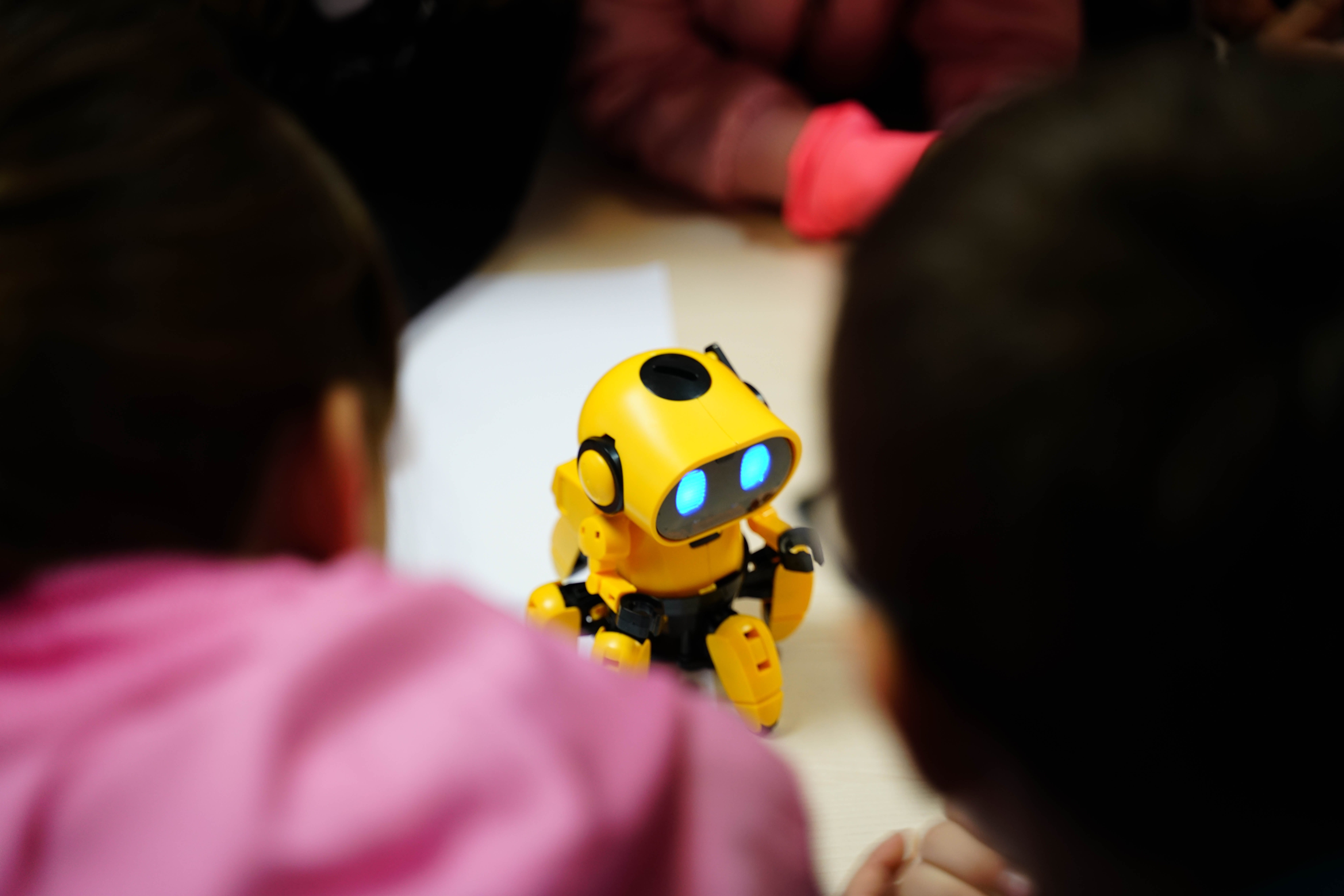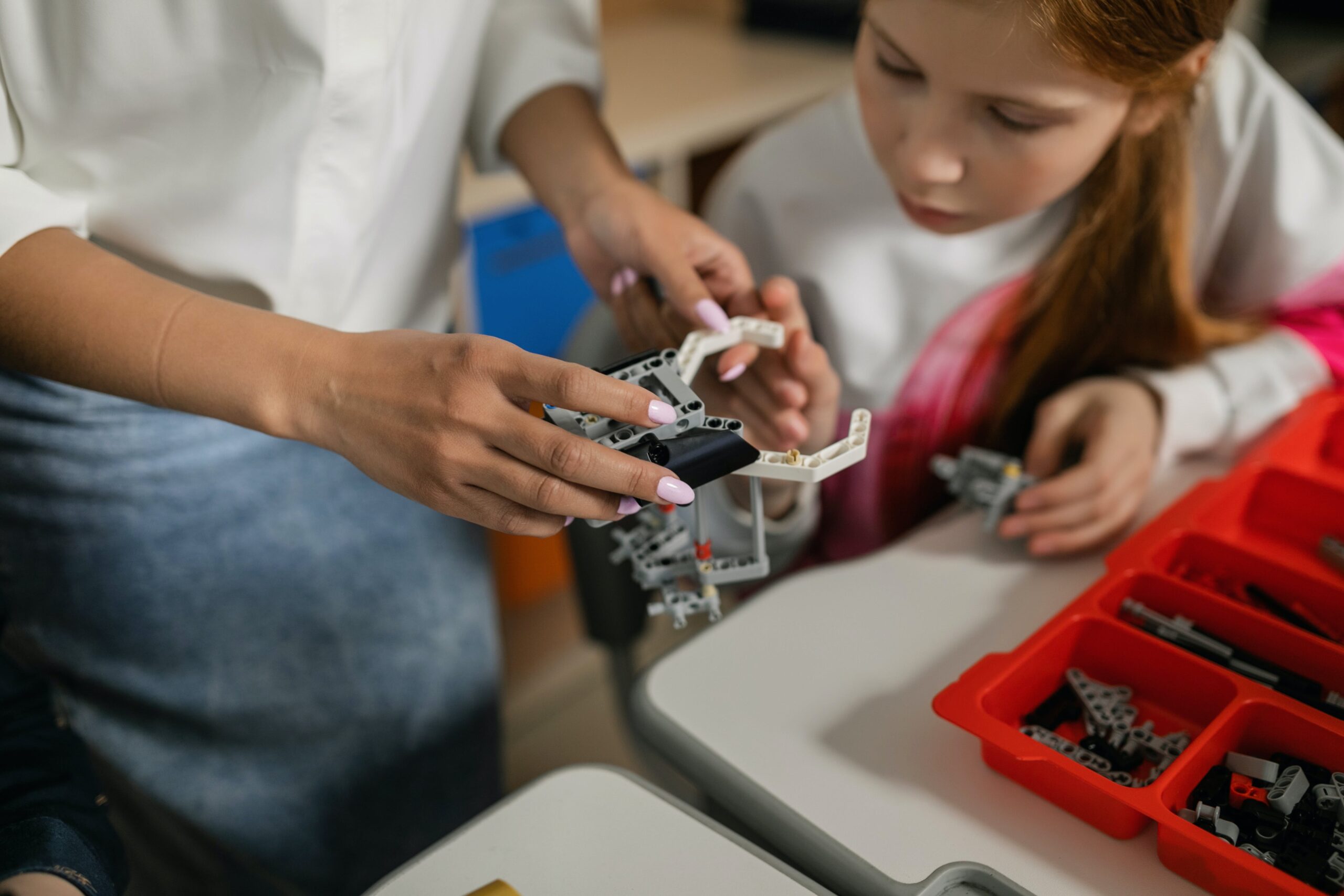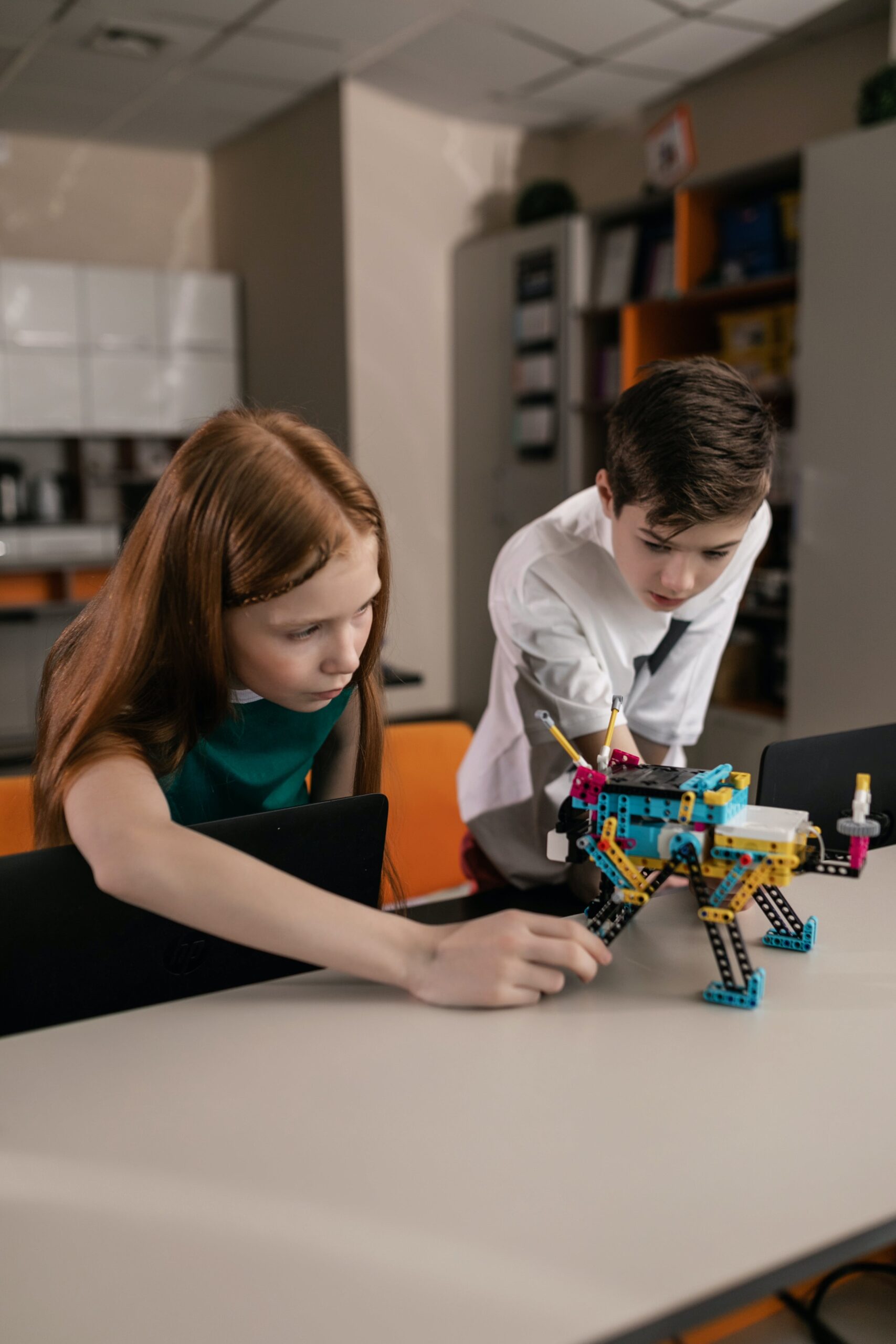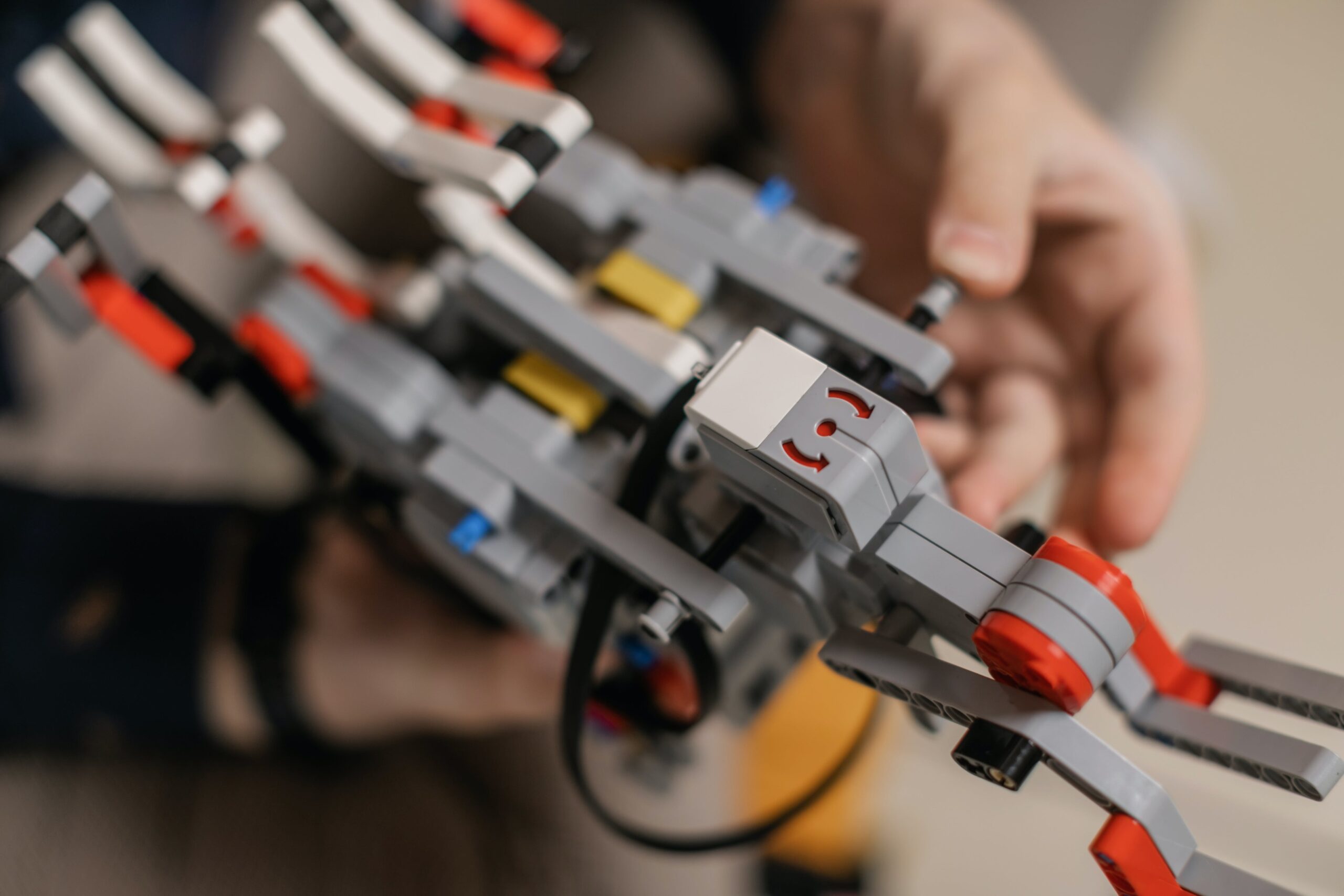Kids’ robotics projects have advanced significantly from basic mechanical toys. Children may now immerse themselves in engaging hands-on activities that foster their interest in STEM (Science, Technology, Engineering, and Mathematics) topics because of technological improvements and the availability of user-friendly robotics kits.
With the help of these projects, kids may learn about constructing and programming robots, circuit design, sensor comprehension, and problem-solving, among other areas of robotics. Kids may explore, make errors, and learn from them in a safe, engaging atmosphere that encourages growth and satisfies their innate curiosity.
Kids may gain a variety of transferable skills in addition to technical abilities through engaging and instructive robotics projects. These include solving problems, reasoning, being creative, communicating, working in a team, and persevering. These are all necessary for success in the twenty-first century.
Furthermore, working on robotics projects might encourage children to think about future professions in STEM subjects by igniting their interest in science and technology at a young age. Children are more likely to acquire a lifetime interest in these subjects when learning is fun and interactive, paving the way for lifelong learning and inquiry.
Benefits of Robotics Projects for Kids
Giving children the tools, they need to thrive in the increasingly automated world of the digital age when technology permeates every aspect of our existence, is imperative. Robotics projects are a fun and exciting way to introduce youngsters to the ideas of science for kids, technology, engineering, and mathematics (STEM) while also fostering their creativity and problem-solving abilities.
Hands-on Learning Experience
Children may learn through hands-on robotics projects that go beyond what they would normally study in a classroom. Kids engage in an active learning process by building robots and programming them to do certain tasks.
This fosters positive thinking in children by helping them understand scientific concepts and logical reasoning better. This hands-on method encourages a better comprehension of challenging ideas, making learning engaging and memorable.
Encourages Critical Thinking and Problem-Solving
Robotics projects assess children’s critical thinking and problem-solving skills. During the building and programming phases, kids encounter obstacles and setbacks that teach them how to evaluate the situation, identify the problem, and come up with solutions.
This iterative process develops resilience, adaptability, and the ability to solve problems effectively—a useful mentality that can be applied to many other facets of life.
Fosters Innovation and Creativity
Children may show their creativity and inventive ideas via robotics projects. Young minds may explore, learn, and express their creative ideas via a variety of activities, such as building unique robot structures and giving them special functions.
This creative outlet encourages originality, nonconformist thinking, and a love of creation and innovation, all of which help youngsters improve their critical thinking abilities.
Cultivates Collaboration and Teamwork
Robotics projects often demand teamwork, which provides children with an opportunity to develop important collaborative skills. As they engage in group projects, they learn the importance of clear communication, cooperation, and job delegation.
They can directly vouch for the benefits of collaboration, appreciate the significance of understanding different points of view, and recognize the efficacy of group problem-solving—all of which are critical abilities for children’s art projects as well as success in later academic and professional contexts.
Increases Self-Esteem and Confidence
Children get a sense of success and pleasure in their work when they work on robotics projects. Students who successfully build and program a robot gain confidence in their ability to absorb and apply information.
Through trial and error, they learn that setbacks present chances for improvement, bolstering their fortitude and sense of worth. Robotics projects may boost a child’s confidence in many areas of their life.
Future Career Opportunities
Early exposure to robotics projects may help youngsters prepare for possible future professions in child development since the area of robotics is growing rapidly. Children who have a solid foundation in STEM topics and practical robotics experience are better suited to pursue professions in engineering, programming, artificial intelligence, or robotics research.
Kid’s Project Ideas
Robot Car
With this project, you can help kids learn about the basic mechanics of their toy automobiles. Two skewers, a solid piece of foam, two AAA batteries, straws, and four bottle lids for wheels are some of the supplies needed.
To give the automobile more life, kids may attach googly eyes and a pipe cleaner for a mouth. Younger children should always be supervised by an adult while using tools like hot glue guns, butte knives, scissors, and X-Acto knives since they can cause injuries. The remarkable outcomes bestow onto the children a feeling of self-assurance and achievement.
Wobblebot
Young fans of robots will adore this project. Even for small children, the work is not only simple and enjoyable, but it also does not take too long to do. They will require a 1.5–3V DC motor, two batteries, cardboard, one battery holder, five corks, and two googly eyes. You may experiment with different wobblebot designs with your child throughout the weekend.
When utilizing the hot glue gun and scissors, the kid-friendly materials only need minimum supervision. Watching the wobble-bot hop and dance will be entertaining for young stars.
Mini Robot Bug
With a few easy steps, kids can turn a clothespin into a little robot bug. Paper clips, wires, a coin cell lithium battery, one vibrating motor, two LEDs for luminous eyes, and other components are required. Since all of the supplies are affordable and readily available, you will not spend a lot on a single project.
When the little robot insect is on a smooth surface, it travels swiftly. Adults can supervise older children who solder, or they can handle the full task alone. It is not surprising that your child creates many little robot bugs; the end products are rather remarkable.
Four-Legged Walking Robot
For children, building a four-legged walking robot project could seem difficult, but it is not. Because each step is simple to follow, children will not give up in the middle of the procedure.
A DC motor, adhesive, battery pack, and battery holder are needed supplies. It is best if children’s legs are all the same length to provide the robot with the most stability possible as it moves. Kids may learn about body and leg motion control as well as other engineering principles with this project.
Your child has most likely been motivated to try more do-it-yourself projects by this one. Check out these amazing beginner-friendly LED projects.
Propeller Car
For youngsters who are passionate about vehicles, the propeller car project is a must-try because it is entertaining and captivating. For easy acceleration, you can use a foam board, bamboo sticks, balsa, rigid cardboard, or anything light but stiff. Furthermore, smaller, lighter wheels are preferable to larger ones since they allow the automobile to accelerate to its top speed.
Robotic Arm
Kids may learn a lot about mechanical processes by working on the robotic arm project. Assemble sturdy cardboard, straws, hot glue, large thread, elastic, and additional stationery supplies.
It is fun to carve the cardboard into the form of a palm. Older children can use a pair of scissors to chop the straw into little pieces, but you should watch them use hot glue. Numerous sizable objects, such as balls and water glasses, may be grasped by a robotic arm.
A Robot that Follows a Line
One popular project that teaches children the basics of sensor integration and programming is a line-following robot. By assembling a robot on wheels and adding line-tracking sensors, children may train a robot to follow a black line on a contrasting surface.
This project encourages logical thinking in addition to introducing students to concepts like sensor input and decision-making.
Obstacle-Avoiding Robot
Building an obstacle-avoiding robot encourages students to think positively by having them analyze how programming logic interacts with the surroundings. Using ultrasonic sensors, kids may build a robot that can identify and avoid obstacles. Through this project, their understanding of sensor technology is enhanced, and their problem-solving skills are developed.
Sumo Robot Challenge
The Sumo Robot Challenge is a fun program that promotes cooperation and competitiveness. It was influenced by the sumo wrestling sport in Japan. Youngsters can build robots using sensors to remove the robot of their opponent from the ring. The initiative encourages creativity, strategic thinking, and technological design approaches.
Maze-Solving Robot
With robotics, critical thinking, and problem-solving techniques, a maze-solving robot may be developed. This is a fun task to do. Youngsters may construct a robot using motors and sensors, and then program it to navigate a maze on its own. This initiative, which emphasizes algorithm construction, introduces children to the concept of artificial intelligence.
Programmable Robots
Children may learn the fundamentals of coding and programming in a fun and interesting way with the help of programmable robots. Often, these robots come with easy-to-use interfaces that allow students to create commands or sequences that the robot can follow.
Programmable robots are a great way for kids to have fun and develop their logical thinking, creativity, and problem-solving skills.
Remote-Controlled Robots
Children may experience the thrill of controlling and navigating their robot with remote-controlled models. Using a portable controller or smartphone application, kids may program the robot to walk, dance, or do certain jobs.
This kind of robotic toy encourages dexterity, coordination, and imaginative play by allowing kids to conceive thrilling situations and adventures.
Interactive Companion Robots
Interactive companion robots are designed to be more than simply toys; they are emotional communicators with youngsters. These robots can react to touch and voice orders, and they can also use lights, sounds, and gestures to express their emotions.
Interactive companion robots aid in the social, emotional, and communicative development of youngsters as they play and speak with their robotic buddies.
Educational Robotics Kits
Education-focused robotics kits bring together the excitement of building with the educational benefits of programming, transforming them from simple educational games for youngsters into effective learning resources. Often, these kits include modular pieces that youngsters may assemble to create their robots.
While constructing, kids learn about physics, electronics, and programming concepts. Because educational robotics kits promote problem-solving, critical thinking, and hands-on learning, they are a fantastic STEAM education resource.
Robotics Kits for Kids
LEGO Mindstorms
In the realm of robotics kits, one well-known brand is LEGO Mindstorms. Children may use LEGO bricks and Mindstorms to construct and program their robots. The robot’s brain is a programmable brick that is part of the kit, along with motors and sensors.
Kids can program their robots to do a variety of activities, like playing soccer, traversing mazes, and following lines, all through an intuitive interface. Because LEGO Mindstorms are so adaptable, kids may let their imaginations run wild and try out various robot ideas.
For young children, Lego robotics is an enjoyable and simple method to begin their robotics adventure.
VEX Robotics
A wide variety of robotics kits appropriate for different age groups are available from VEX Robotics. Metal components, motors, sensors, and a programmed microprocessor make up these kids’ robotics kits. Children may build robots with VEX that range in complexity from basic devices to sophisticated systems.
Additionally, the kits include user-friendly software that lets students utilize a block-based coding language to program their robots. Through challenges and contests, VEX Robotics offers kids an organized learning environment where they may learn engineering concepts and be encouraged to work in teams.
Makeblock mBot
A robotics kit designed for beginners, Makeblock mBot teaches kids the fundamentals of electronics and programming. A collection of parts that may be put together to create a robot automobile is included with the kit.
Kids can operate the mBot’s sensors, LED lights, and motions via a graphical programming interface. Makeblock mBot seeks to introduce kids to robotics and act as a springboard for more complex projects. Young enthusiasts will find the kit to be a good choice because of its cost and simplicity.
Ozobot
Ozobot is a little robot that offers a distinctive and engaging educational experience. Ozobot can follow lines, maneuver through mazes, and react to color codes written on paper because of its small size.
Youngsters may program the robot to follow certain patterns and instructions by sketching them. With Ozobot, kids can learn programming ideas while expressing themselves and integrating creativity with code. Additionally, the package provides a range of educational tasks and puzzles to keep young brains occupied.
Conclusion
Getting kids involved in entertaining and instructive robotics projects offers a world of learning, creativity, and personal development opportunities. Kids learn a variety of skills via building and programming robots, such as problem-solving, critical thinking, programming logic, and cooperation.






